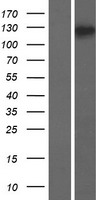order histories, retained contact details for faster checkout, review submissions, and special promotions.
Forgot password?
order histories, retained contact details for faster checkout, review submissions, and special promotions.
Locations
Orders Processing,
Shipping & Receiving,
Warehouse
2 Shaker Rd Suites
B001/B101
Shirley, MA 01464
Production Lab
Floor 6, Suite 620
20700 44th Avenue W
Lynnwood, WA 98036
Telephone Numbers
Tel: +1 (206) 374-1102
Fax: +1 (206) 577-4565
Contact Us
Additional Contact Details
order histories, retained contact details for faster checkout, review submissions, and special promotions.
Forgot password?
order histories, retained contact details for faster checkout, review submissions, and special promotions.
TJP3 / ZO3
tight junction protein 3
The protein encoded by this gene is a member of the membrane-associated guanylate kinase-like (MAGUK) protein family which is characterized by members having multiple PDZ domains, a single SH3 domain, and a single guanylate kinase-like (GUK)-domain. In addition, members of the zonula occludens protein subfamily have an acidic domain, a basic arginine-rich region, and a proline-rich domain. The protein encoded by this gene plays a role in the linkage between the actin cytoskeleton and tight-junctions and also sequesters cyclin D1 at tight junctions during mitosis. Alternative splicing results in multiple transcript variants encoding distinct isoforms. This gene has a partial pseudogene on chromosome 1.
| Gene Name: | tight junction protein 3 |
| Family/Subfamily: | Occludin , not assigned-Occludin |
| Synonyms: | TJP3, Tight junction protein 3, ZO-3, Zona occludens protein 3, Zonula occludens protein 3, Tight junction protein ZO-3, ZO3 |
| Target Sequences: | NM_014428 NP_055243.1 O95049 |
Publications (1)






If you do not find the reagent or information you require, please contact Customer.Support@LSBio.com to inquire about additional products in development.









